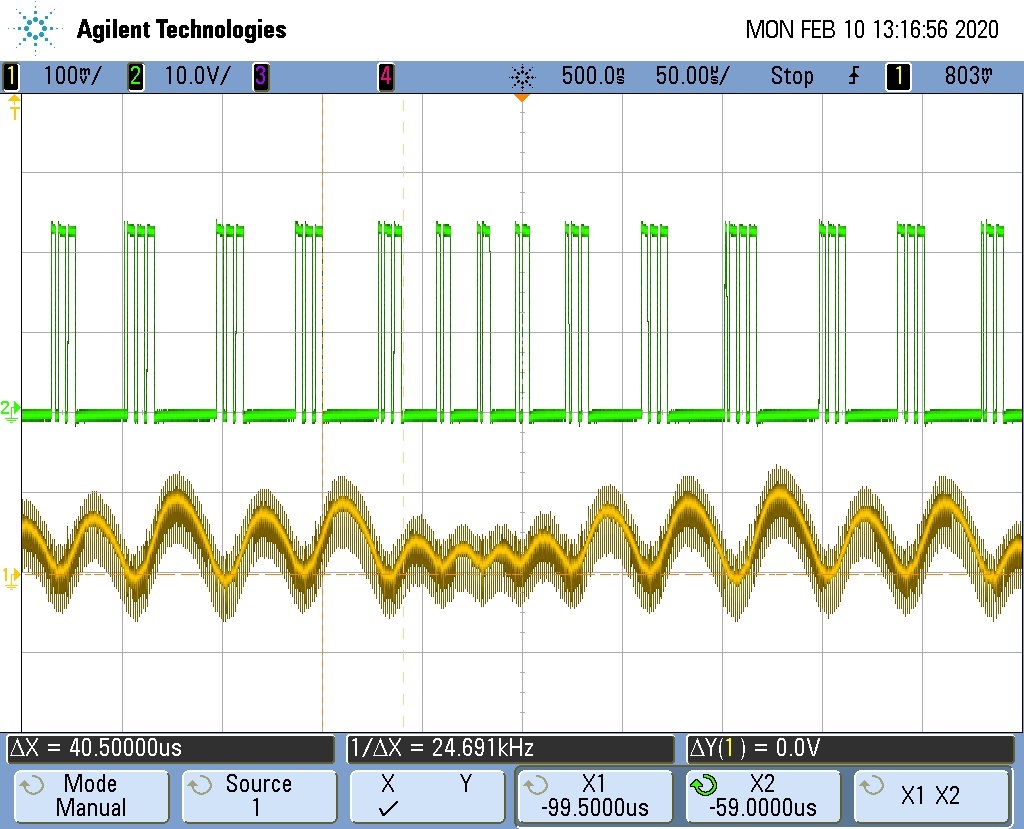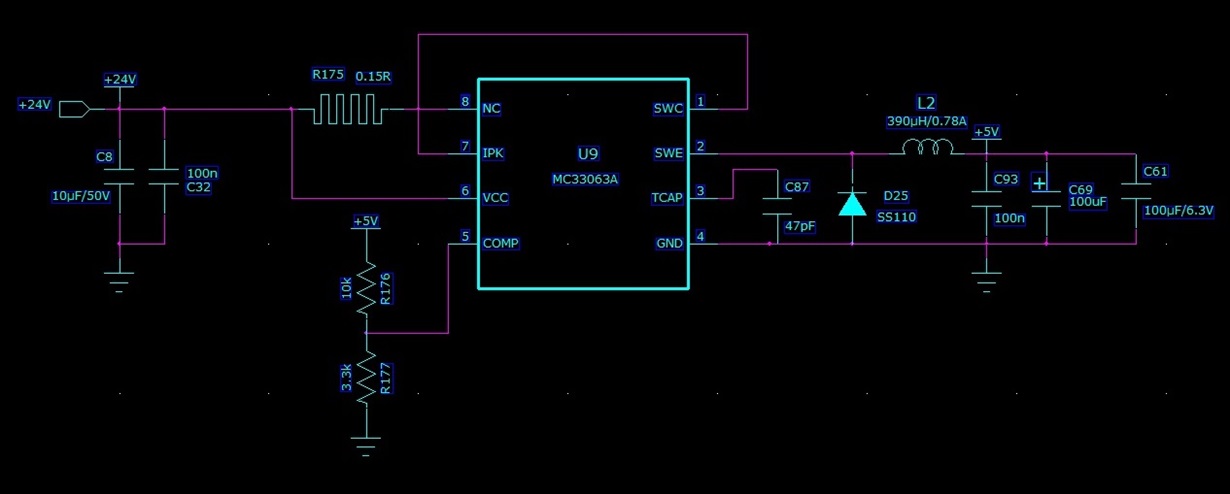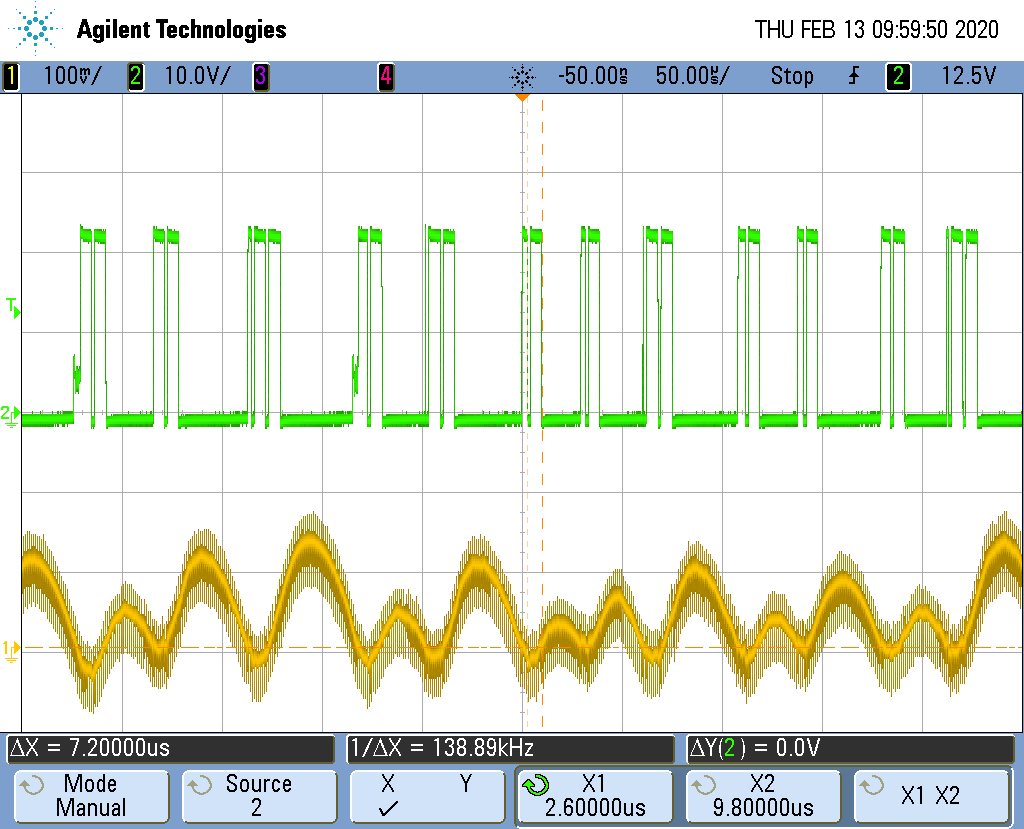Hello,
I would like to know if the functionning described below is correct for an MC33063A. I am refering to the signal at pin #2 of the MC33063A in green colour which has a max frequency of the pulses of 200 KHz. In yellow colour, the signal is the AC component of the output of the MC33063A. Schematic of the test is described below. The MC33063A regulates at +5V DC from a +24V input. Current output is about 300 mA. The CT value is quite low but I obtain lowest ondulations on the output with this capacitor of 47 pF. I am wondering if I am oustide spec with this 47pF capacitor. When the capacitor is above 47 pF, ondulations on the output are well above 100 mV which is not good for our application.
Thank you in advance for your comments.
Best regards,
Fabrice









